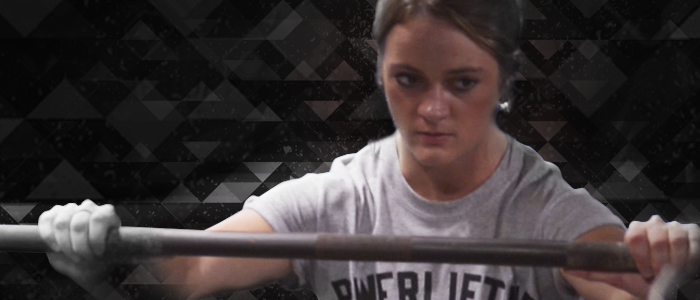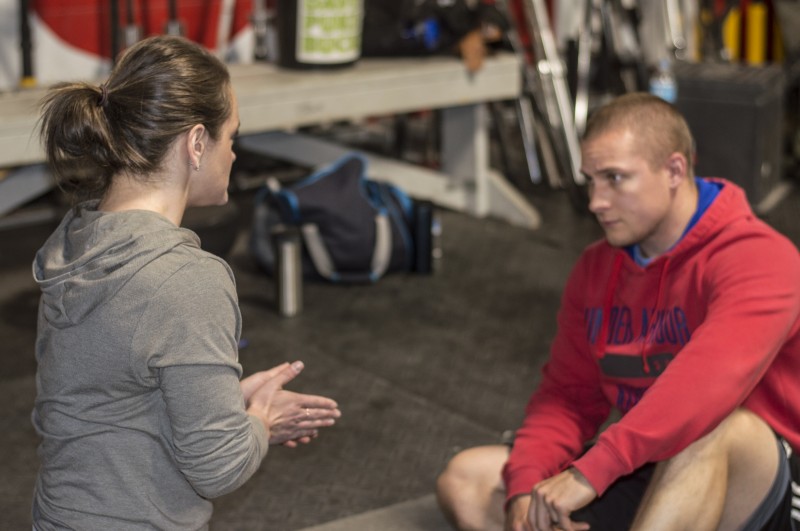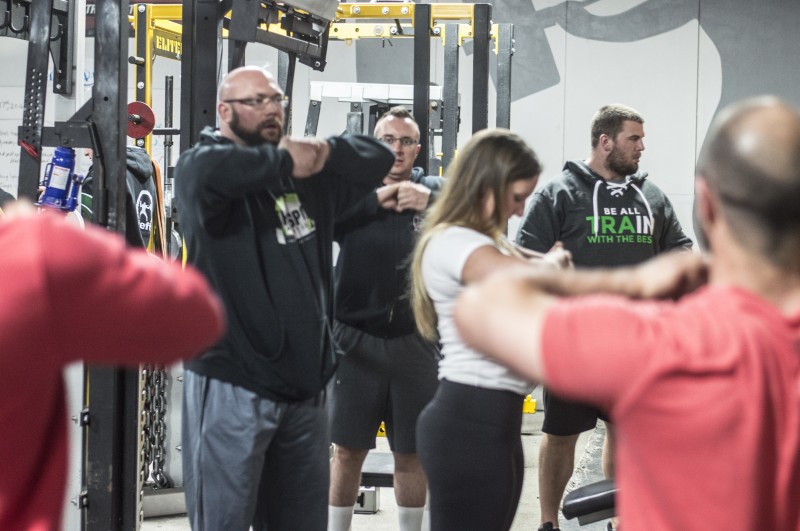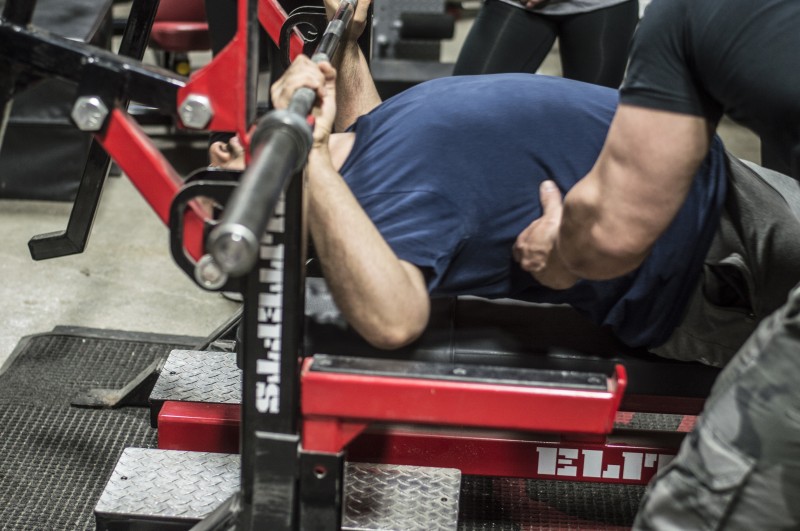
As a physical therapist, generally people seek me out only after they’ve been injured and need to take time away from training how they normally would.
“How long until my strength comes back?”
I hear that question a lot, especially once an athlete does get back to training and has been cleared to return to their movements. We ask this a lot when injured, but even if you’re not dealing with major injury now, there things you can be doing that will add pounds to the bar.
RECENT: Motor Patterning and PRI — Finding Solutions to Hip Shift and Dysfunctional Movement
Here’s what’s important for you to know: We talk a lot about mobility, and it’s incredibly important. What’s awesome is that we as a younger generation of powerlifters are starting to notice that a lot of times, our mobility will increase or improve with things other than stretching or mashing on tissue. More athletes are using things like active movements and “activation” type exercises to improve their movement pattern and add stability (rather than continuing to mobilize and increase passive available range, potentially creating instability) to a position. What this means is that we, generationally, are becoming more attuned to the idea of motor control and finding a sweet spot on the mobility-stability spectrum to meet the demands of our sport, whether it be Olympic lifting, powerlifting, or sport specific training. And those all have different demands: as an Olympic lifter, you require both mobility and stability in positions that a powerlifter may not. As a powerlifter, you’re going to benefit from an acquired stiffness in a certain position or pattern.
Whether healthy or coming back from injury, there are a few things in particular that I seem to spend a lot of time talking about with athletes; these are the things everyone seems to want to know more about:
- Perceived (or real) muscle weakness
- “Correctives” and if they’re actually helping
- Pain
- How and when to train in the presence of pain, OR how to stay healthy and prevent things from breaking down when a deficit (either mobility or stability) is noticeable.
Ultimately, it always comes back to “how can I get stronger?” Yes, programming is important (duh), but from my standpoint as a physical therapist, coach, and athlete, whether you’re healthy and training well, or coming back from injury, there are certain components that need to be in place that will permit you to move the most weight.
What’s key for you as an athlete to understand is our brain’s processing of information received from all sorts of receptors has us in a constant flux of mobility and stability demand. When one of those is lacking to the degree that we need it, we layer on preference or dominance to a dysfunctional pattern. Your brain is built to interpret all these signals and let you survive, to keep you from failing, and will selectively permit (or not, for protective purposes) you to move throughout certain ranges with certain thresholds of weight. Obviously, we’re strongest when muscles are able to work together in the most constructive way without overusing or underusing one chain (or isolated group, depending on the movement) or another. The athletes that are using activation type exercises to improve mobility and stability are catering to this system in a way.
When you’re hurt and wanting to know “when” you’ll feel strong again, I get it. It’s the first thing I panic about when I can’t train the way I want to. And truthfully, that’s a tough question to answer. Experienced guys will tell you that when things line up well it’ll come back quicker than you think. When it comes to what that actually means, I think it can largely come back to the list of the things above that contribute to that sweet spot on the mobility-stability spectrum. Think about stability as the balance between all the muscles acting around a joint. They all contribute to a common problem I often see precede injury: instability.
Weakness
Your weakness may not actually be weakness. It may be more what I would call inhibition. Not exactly the same idea as when someone tells you that your muscles aren’t “firing” (this can also reflect a timing issue), but they may be interrelated. What inhibition loosely refers to is your brain and muscles’ ability to communicate with each other. A muscle or group may be perfectly strong, but in a place or position that decreases its ability to generate force. Think about it like having a perfectly good cell phone that exists in a place where you have no service; it’s not the phone’s malfunction so much as it is a reflection of the environment. There are lots of things that can contribute to inhibition, but here are a few that I see commonly:
- Posture: Posture drives the relative position of where our muscles attach. Given that they’re essentially a system of levers and pulleys, which require a mechanical advantage or ability to pull ON something (our joints/bones need to move), changing the position changes its starting point for the “pull” we ask it to produce. If that muscle is chronically lengthened or abnormally shortened, it has lost its mechanical positioning to do work. How you spend 22 hours of your day has a larger influence on your posture than 15-30 minutes of mobility or stability work.
- Overuse/Dominance: I wrote about this a bit in some previous articles discussing the ability to turn off or on a muscle. If stability is partially a product of surrounding musculature co-contracting around multiple joints, overuse of one antagonizes the cocontraction and directly contributes to instability. An overactive muscle group will make it incredibly difficult for your brain to communicate with that group’s opposite, simplistically speaking, decreasing your ability to keep anchored. It’s like asking someone who has not worked a day to keep up with someone who has been in their respective work field for decades; it’s inefficient, doesn’t respond to demand as quickly, and has a hard time communicating with other surrounding muscles. These dominant patterns actually can make it difficult for major joint stabilizers to work together, sending possible “danger” signals to your brain, where it will override your ability to accomplish a given task in a certain position.
- Pain: Oh, man. The power of pain. I’ll make a very, very oversimplified statement here because this is its own science. The more frequently we respond to a pain message, the quicker we are to hear that message. Our sensitivity to it increases. If we’re built to survive, and pain is a signal that tells our brain there is danger, whatever it is that is associated with that pain signal (visually, auditorily, all over — our brain receives ALL these signals and makes this decision for us) becomes a “no go” and is prohibited.
Correctives
This is usually the first place we go with injury or prevention. Correctives are great; they’re designed to influence something, often times on a neural level. Generally, what we’re doing with correctives is either permitting certain ranges to be achieved, retraining muscles to work in isolation, to improve stabilization and coactivation, or to integrate globally within a specific movement pattern with increasing demand. It’s not all that differently from how we train: you have to learn to squat before adding a whole bunch of variations.
Generally, a lot of the corrective exercises you see on social media address one or more of those three things when performed correctly. You’ve got to ask yourself what you’re trying to accomplish. Mobility? Stability? Activation? Integration? If an exercise is helpful for your particular deficit, I’ll likely ask you what you actually feel, what’s difficult about it, and what you feel you’re getting out of it. You can do bird dogs all day long, but if you don’t know why you’re doing them and can't feel something during the corrective that you need to feel in your main movement, you’ve lost your purpose. Use these as stepping stones to bridge the gap between your current “how” and how you need to be moving during your training.
Pain
There are a few components to address here.
- If there is clear evidence of tissue damage (traumatic injury), there’s generally a biological timeline that tissues require to heal. You cannot outsmart physiology in that way. Depending on the type of injury, this timeline varies. This is where someone like a physical therapist or doctor can be a tremendous resource for you.
- If there is inflammation, you need to permit that time and an environment to let it reduce. Swelling is not only incredibly painful, but can cause inhibition of surrounding musculature as well.
There are a number of things that can contribute to pain. Ultimately, your brain receives a number of different signals that are then processed, modulated, and used to make an executive decision. As mentioned earlier, the more frequently you feel it, the more attuned to that input your body becomes. Pain essentially becomes a “danger meter” that we often incorrectly associate with damage. That meter isn’t always accurately calibrated to the true level of danger. The more sensitive that danger meter becomes, the smaller the signal needed to set off the pain response.
There’s an idea that pain in and of itself can contribute to inhibition. As you receive pain signals (hypothetically inaccurate) more and more frequently, it perpetuates the idea of tissue damage, setting off another associative reaction of increased pain, and more tissue damage...and the cycle continues. I’m praying the pain science gods aren’t rolling in their graves at that short explanation (and it really needs to be its own article) but understand that as much as pain is important to acknowledge and MAY indicate danger, it’s equally (if not moreso) important to acknowledge the pain generator, the source of the signaling, and the accuracy or sensitivity of that signal.
So…the last idea on that list: how to train in the mean time or what to do to improve to stabilize your situation and return to training. I brought up the other three topics first: they contribute to “how.” The mobility/stability spectrum is ultimately what we’re talking about with all these concepts: where there’s no stability, there’s no force production, and nothing to anchor your movements off of. The neural circuitry foundation required to keep your brain from saying “no” needs to be recalibrated.
I cannot overstate the importance of both stability and controlled mobility.
A few ideas to consider when rebuilding: The big keys here involve teaching your brain that movement in general outside of our few non-fragile positions is a non-threatening motion. The more safe our brain perceives a movement, the more likely we are to access it and generate force in that position. Inhibition decreases, stabilization improves (thus providing an actual anchor for your force production), and threat perception decreases.
1. If you’re coming back from injury and have been cleared to start training again, first things first: you have to get your brain, joints, tissues, etc, to have a more accurate and less threatening experience of the movement at hand. Keep the movement pain free, below the pain threshold. Your goal is to encourage the movement in a way that rebuilds a positive relationship. That may involve training one point in the range of motion (isometrics), limited/partial range (to permit reintegration of a pattern without pain), below a certain percentage (with gradually improving patterning) or it may (I hate to say it) involve not training the motion at all at first. If there’s inflammation in an area, that needs to be addressed first and foremost. Remember, pain is one major contributor that can play a role in shutting “off” certain key muscles. You will not be as strong as you could be if that’s the case.
2. Add dynamic resistance, especially in unilateral work. I absolutely love bands for this. The change in tension means you’re in a dynamic movement, and if you actually really work to control both with and against band tension, there’s a huge stabilization component that happens. Stability is a BIG cue to let your brain permit what you’re chasing. If you’re previously painful at a certain range in the motion, you can utilize chains to decrease the demand in that particular range, such as the bottom of a single leg exercise or elbow extension exercise. This is huge in retraining the negative-associated reaction with a lot of these things. You may find that at first you’re using tremendously lower weight, but the great news is that we CAN change quickly, with proper stimulus.
3. Utilize tempo to improve mind-muscle connection and improve stability. Once you can actually find a muscle (I’ll utilize glutes for example, but low traps and lats, as well), see if you can keep motion intentionally controlled. Be demanding of yourself in this. Don’t pause your single leg work for the sake of pausing or use a long eccentric arbitrarily. Pause with intent. Ask yourself if you can actually feel the glute that you’re trying to retrain. This is where things actually get kind of fun with main movements, too.
Video your sets and you may notice that at a certain point in your main movement you always lose position. Start with a LOW weight (as low as 40% for many, sometimes just the bar), and as you’re integrating into your main movement, pause just before where you start to lose position or break down. Correct your position and then proceed to finish. You may find problems such as, for example, halfway up a deadlift, you may lose position in your lumbar spine, the bar may drift, and you may alter your neck position. This is a fantastic time to retrain correct patterning with submaximal weight that will stay pain free, retrain the pattern, and have good carryover to your main lift. This is rehab as training and works so beautifully. Gradually work to decrease the pause, essentially transitioning to the full movement without faulty patterns.
4. Train Tri-Planar. Guys, we move up and down a lot. We’re great at walking forward. I’m all for specificity, but a lot of us have lost our ability to do much except for up and down, or back and forth. Don’t be the tin-man. No tin man ever accomplished anything athletic. Train rotation (or anti-rotation) in your core, shoulders, and hips. Train lateral stability. This can act to “wake up” certain muscles to work in a different position, in a different plane of motion, or in a different demand, further increasing stability. I would be surprised if your mobility didn’t improve as you improved your stability in more than one direction. Go back to basics. Do things that feel like you might look ridiculous doing, because it’s probably a good indication that your acquired stiffness has become overly stiff, skewed, and disadvantageous.
5. Find the alternate position. If you find yourself in one posture during the day, or feel you’re constantly in one pattern in your training (as a technical athlete, you probably are), intentionally seek opportunities to find the opposite. There are a few reasons for this. Yes, you need to train the pattern you’re in because it is how you lift weight, but recall that a lengthened muscle cannot generate force. This means decreased stability.
MORE: Rehab and Training: Forward-Thinking Prevention, Retrospective-Thinking Treatment
You need to be able to co-contract to move weight. I’m not advocating going gung-ho on the total opposite, but be intentional about at least “feeling” the opposite muscles or chain every now and then, even if just posturally. If you're someone with a hard arch when you squat, practice even just having an awareness of your low abs and/or glutes occasionally throughout the day. Spend 5-6 minutes per week (two minutes of improved low ab awareness before or after three of your lifting days is easy to incorporate) increasing your awareness of these during any mobility or corrective work you do.
I said it before, and I’ll say it again: I cannot overstate the role of stability and decreased threat perception (on a neural level) in permitting you to add more weight on the bar. Whether you are currently healthy or currently trying to rehab a bit, you will only improve your performance by acknowledging that we have a high demand for controlled mobility. So much of what we do is neural, but from a purely mechanical standpoint hypertrophy matters, and mass moves mass. But if that mass isn’t anchored to a stable joint, it's not going to be able to generate much force. Because everyone’s situation is a little different, it’s hard for me to give you specifics. But if you’re looking to come back from injury, these are the guidelines I would follow, with a little background knowledge so you don’t feel you’re following blindly. If you’re healthy, honestly, I believe this is one way to step up your game on the platform, and I’d challenge you to try incorporating these things to your training and see what effect it has on both force production and longevity.














3 Comments